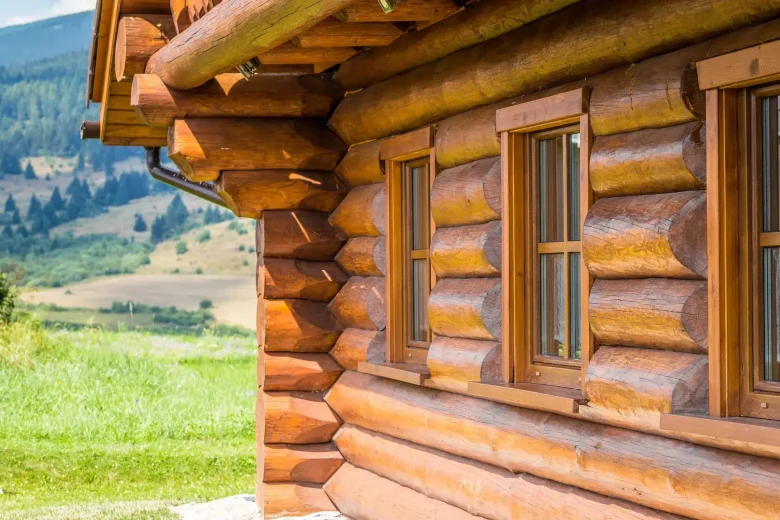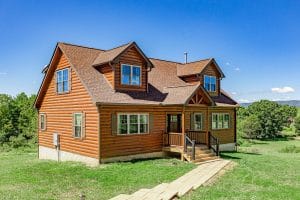Owning a log cabin is a dream for many. The rustic charm, cozy ambiance, and natural aesthetic make it a unique home that blends seamlessly with nature. However, log cabins require special care to maintain their beauty, structural integrity, and comfort throughout the year. Neglecting maintenance can lead to costly repairs, water damage, and structural issues. Whether your cabin is a full-time residence or a vacation retreat, adopting the right maintenance habits ensures it remains safe, durable, and visually appealing. In this guide, we will walk you through essential log cabin maintenance tips that protect your home year-round.
Inspect and Treat Your Logs Regularly
One of the most critical aspects of log cabin maintenance is regular inspection and treatment. Logs are natural materials, which makes them susceptible to decay, insect infestation, and weathering. Start by examining both the interior and exterior logs for signs of damage, such as cracks, rot, or insect holes.
Treating the logs with high-quality sealants or stains not only preserves their color but also provides a protective barrier against moisture, UV rays, and pests. For optimal results, apply a fresh coat every 3-5 years, or sooner if you notice fading or water penetration. Additionally, make sure to use products specifically designed for log homes, as they penetrate deeply and offer long-lasting protection.
Maintain Proper Drainage Around Your Cabin
Water is the biggest enemy of log cabins. Without proper drainage, moisture can accumulate around the foundation, leading to rot, mold growth, and insect problems. Begin by checking the grading around your cabin. The ground should slope away from the structure to prevent water from pooling near the logs.
Installing gutters and downspouts is essential to redirect rainwater safely away from your home. Be sure to clean the gutters regularly to prevent clogs. For cabins near lakes, rivers, or heavy rainfall areas, consider adding French drains or a gravel perimeter to enhance drainage further. Proper water management ensures that your logs remain dry and your home stays structurally sound.
Protect Your Roof and Chimney
Your cabin’s roof is another key element that requires year-round attention. Inspect shingles, metal panels, or tiles for damage, loose areas, or moss growth. Roof leaks are particularly dangerous for log cabins, as water can seep into the logs and cause extensive damage.
Similarly, your chimney should be inspected and cleaned regularly to prevent blockages, creosote buildup, or structural issues. For cabins with wood-burning stoves, proper chimney maintenance is crucial not only for safety but also for maintaining heating efficiency. A well-maintained roof and chimney protect your cabin’s interior and extend the lifespan of your investment.
Control Pests Effectively
Log cabins are naturally attractive to pests like termites, carpenter ants, and wood-boring beetles. Early detection and prevention are key to avoiding major damage. Conduct regular inspections, paying close attention to areas where logs meet the foundation, window frames, and roof overhangs.
Applying insecticides or wood preservatives that are safe for human use can deter infestations. Additionally, remove wood piles, debris, and overgrown vegetation near your cabin, as these can serve as a haven for pests. Integrating preventive pest control into your routine is a cost-effective way to safeguard your home.
Manage Moisture and Humidity Inside the Cabin
While protecting your cabin from external moisture is vital, interior humidity control is equally important. Logs naturally expand and contract with changes in moisture, which can cause gaps, warping, or cracking over time. Use dehumidifiers in damp areas and ensure proper ventilation in kitchens, bathrooms, and basements.
Maintaining a consistent indoor environment helps prevent mold, mildew, and structural damage. Regularly checking for leaks in plumbing, windows, and doors also prevents hidden moisture problems that could compromise the logs’ integrity.
Maintain Windows, Doors, and Seals
Windows and doors are often overlooked but play a significant role in log cabin maintenance. Inspect frames and seals for cracks, gaps, or worn-out caulking. Drafty windows and doors not only affect energy efficiency but also allow moisture and insects to enter the home.
Weatherproofing with high-quality caulking and weatherstripping keeps your cabin comfortable year-round. Consider replacing old windows with energy-efficient models designed for log cabins, which reduce heat loss and prevent moisture penetration.
Winter Preparation Tips
Winter can be particularly harsh on log cabins, especially in snowy or cold climates. Start by trimming overhanging branches that could break under heavy snow and damage your roof or exterior logs. Check the insulation in your attic and around doors and windows to maintain energy efficiency.
Ensure your plumbing is protected against freezing by insulating pipes or using heat tape where necessary. Removing snow promptly from the roof and around the foundation prevents water damage during thawing periods. A proactive winter maintenance routine keeps your cabin safe, warm, and structurally sound.
Summer and Spring Care
During warmer months, log cabins face challenges like sun damage, rainstorms, and insect activity. Inspect the exterior for fading, cracks, or insect infestation and apply protective coatings as needed. Power washing the logs gently removes dirt, pollen, and mildew, restoring their natural beauty.
Regularly check the roof, gutters, and drainage systems after heavy rainstorms. Summer is also a great time to schedule professional inspections for wood treatments, pest control, and minor repairs, ensuring your cabin remains in peak condition for the year ahead.
FAQs About Log Cabin Maintenance
Q1: How often should I treat the exterior logs of my cabin?
A: Exterior logs should be treated every 3-5 years, depending on the product used and local weather conditions. High-UV areas or regions with heavy rainfall may require more frequent treatment.
Q2: What are the common signs of log damage?
A: Look for cracks, soft spots, discoloration, insect holes, and water stains. These signs indicate that logs may need treatment or repair.
Q3: Can I use regular paint on my log cabin?
A: It is recommended to use stains or sealants specifically designed for log homes. Regular paint can trap moisture and cause rot over time.
Q4: How can I prevent insect infestations naturally?
A: Keep the area around the cabin clear of debris, firewood, and overgrown vegetation. Using borate-based treatments or cedar mulch can also help deter pests naturally.
Q5: Is professional maintenance necessary?
A: While regular DIY maintenance is important, professional inspections every few years can identify hidden issues, treat infestations, and ensure your cabin remains structurally sound.
Conclusion
A log cabin is more than just a home—it’s an investment in comfort, lifestyle, and natural beauty. Maintaining your cabin requires consistent care, from inspecting and treating logs to controlling moisture, pests, and seasonal challenges. By implementing these essential maintenance tips, you protect your home against costly repairs, ensure its longevity, and keep it looking beautiful year-round. Whether it’s preventing water damage, managing interior humidity, or safeguarding against pests, proactive maintenance is the key to enjoying the warmth and charm of your log cabin for decades.



